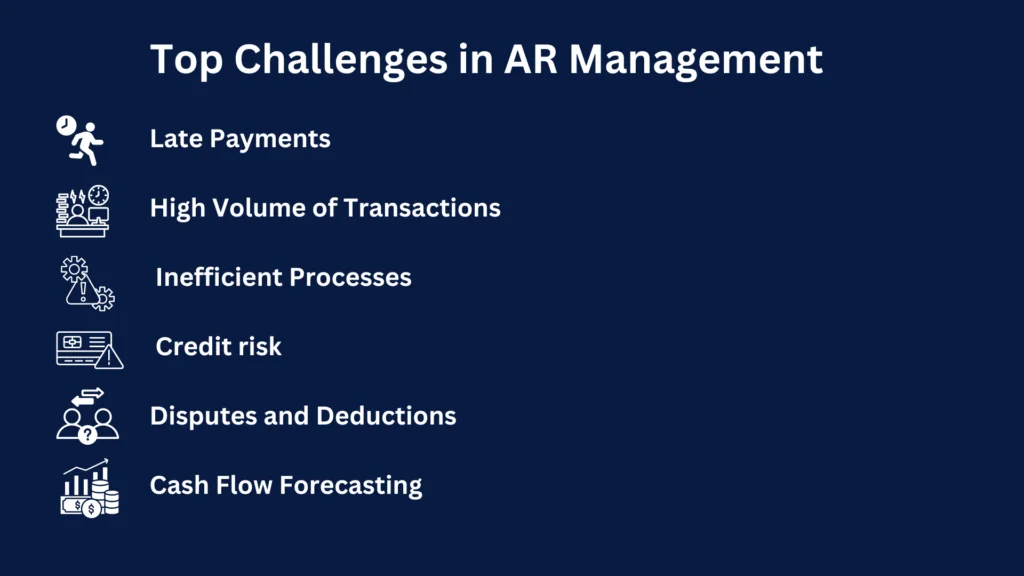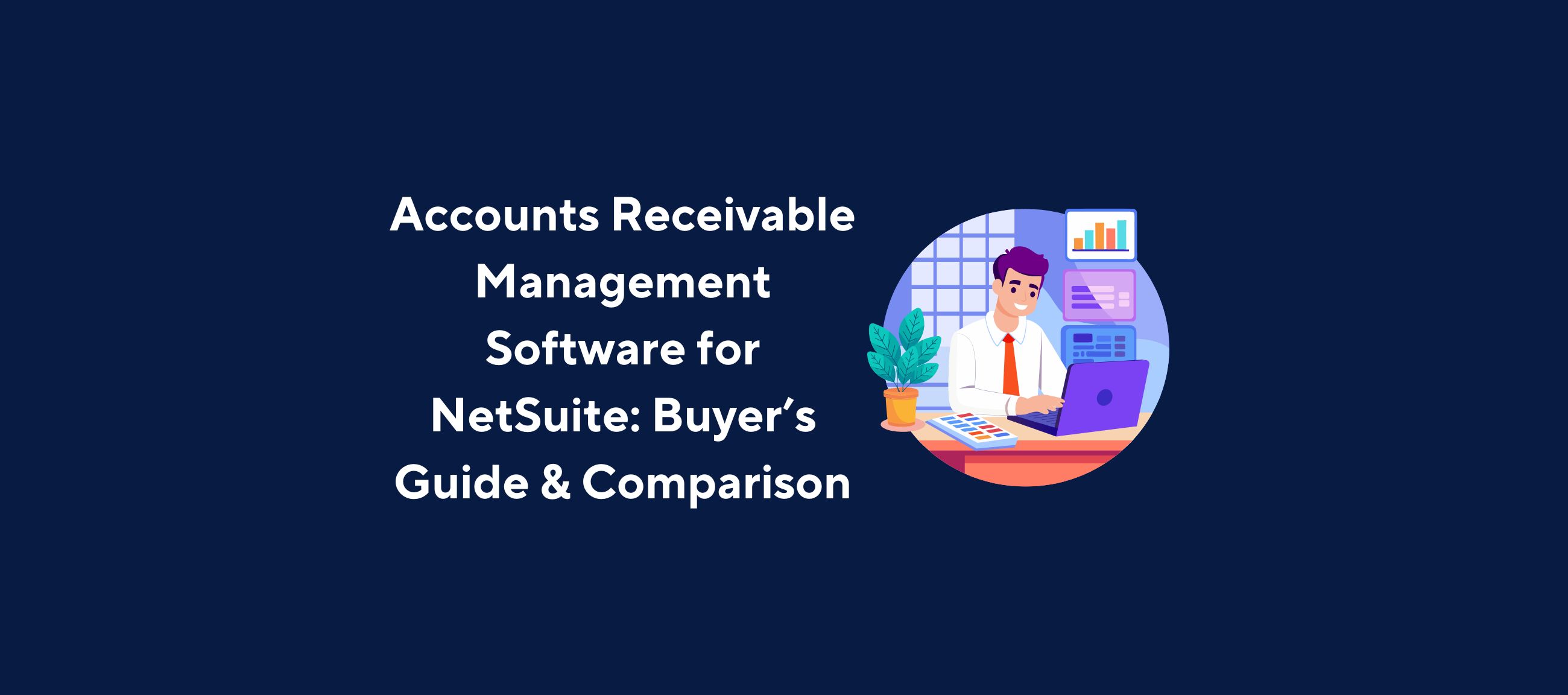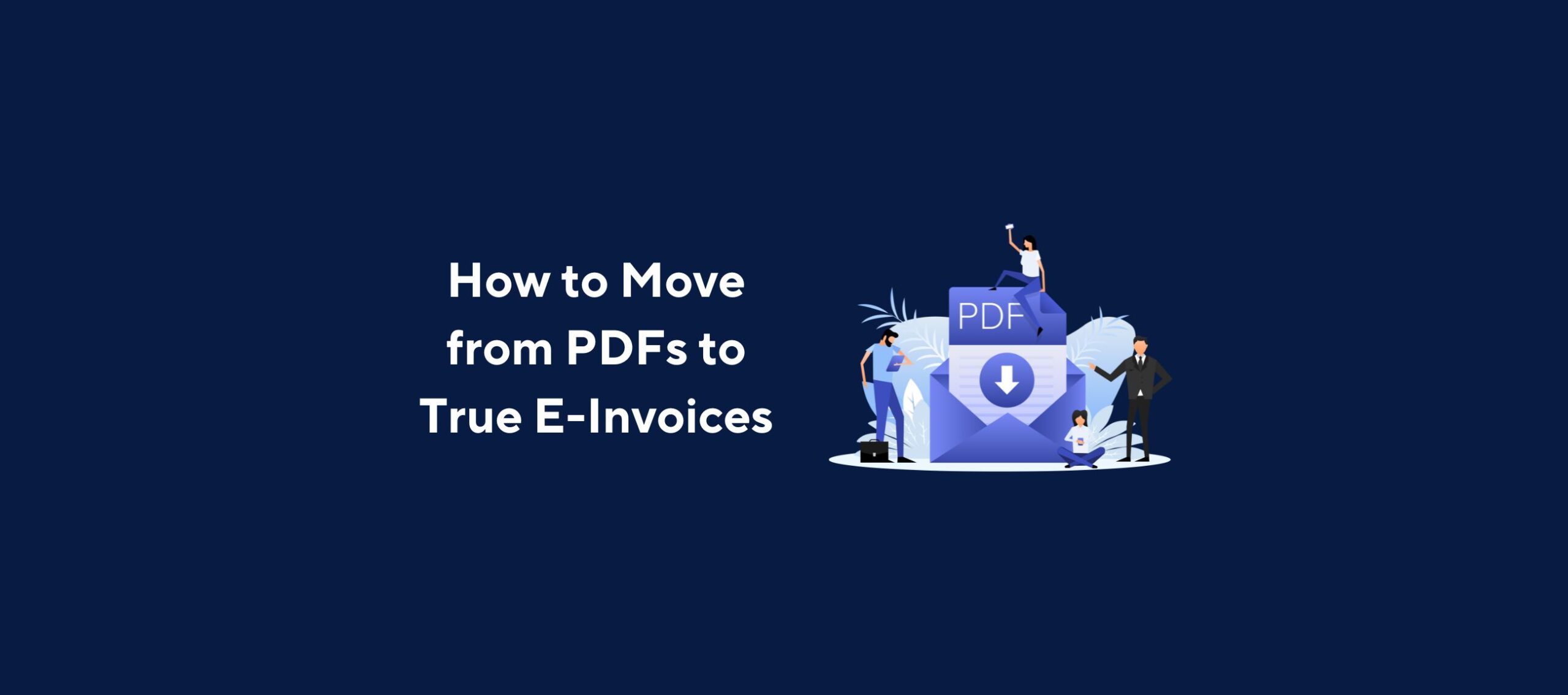Accounts Receivable (AR) management is a crucial aspect of financial health and operational efficiency for any business. It involves the processes and practices employed by companies to ensure timely collection of customer payments for goods and services rendered. Effective AR management not only secures the company’s cash flow but also minimizes the risk of overdue payments and bad debts, enhancing overall financial stability.
In this article, we will cover:
- The Importance of Accounts Receivable Management
- Key Components of the Accounts Receivable Management Process
- Best Practices for Effective Accounts Receivable Management
- The Role of Technology in Accounts Receivable Management
- Common Challenges in Accounts Receivable Management
- Strategies to Overcome AR Management Challenges
- The Future of Accounts Receivable Management
The Importance of Accounts Receivable Management
Cash Flow Management
Effective AR management ensures a steady cash flow, which is vital for meeting day-to-day operational expenses, investing in growth opportunities, and maintaining financial health. When a company fails to collect payments on time, it can experience cash flow problems, which can lead to operational issues, inability to pay suppliers, or even insolvency in severe cases.
Risk Mitigation
By closely monitoring receivables, businesses can identify and mitigate risks associated with late payments and defaults, thus protecting their financial interests. Companies that do not pay attention to their AR can find themselves dealing with high levels of bad debt, which directly impacts profitability and financial stability.
Customer Relationships
Efficient AR processes contribute to positive customer relationships by establishing clear communication and expectations around payment terms. When customers understand the payment process and know that the company is diligent about collections, it creates a professional image and can foster better business relationships.
Financial Reporting and Compliance
Accurate AR management supports reliable financial reporting and ensures compliance with accounting standards and regulations. Proper AR practices ensure that a company’s financial statements reflect true and fair views of its financial position, which is critical for audits, investor relations, and regulatory compliance.
Key Components of Accounts Receivable Management

- Credit Policies: Establishing clear credit policies is a critical part of the accounts receivable process. This includes defining credit terms, setting credit limits, and determining the criteria for extending credit to customers.
- Invoicing: Timely and accurate invoicing is critical. Invoices should include all necessary details to collect payment, such as payment terms, due dates, and penalties for late payments, to avoid any confusion or disputes.
- Monitoring and Follow-Up: Regularly monitoring outstanding receivables and following up with customers is essential for collecting payments. This can be done through automated reminders, statements, and direct communication.
- Collections Process: Having a structured collections process helps in systematically addressing overdue accounts. This may involve reminder calls, letters, and in some cases, engaging collection agencies.
- Technology and Automation: Leveraging technology can significantly enhance AR management. Automated invoicing, payment reminders, and AR software can streamline processes, reduce errors, and improve efficiency.
Best Practices for Effective Accounts Receivable Management
- Set Clear Payment Terms: Clearly define payment terms and communicate them to customers upfront. This includes due dates, acceptable payment methods, and consequences for late payments. Clarity in payment terms helps set the right expectations and reduces the chances of disputes.
- Perform Credit Checks: Before extending credit, conduct thorough credit checks on new customers to assess their creditworthiness and reduce the risk of bad debts. Regularly reviewing the creditworthiness of existing customers is also important, as their financial situations can change.
- Automate Processes: Use AR management software to automate invoicing, reminders, and tracking of receivables. This reduces manual errors and ensures timely follow-ups. Automation can also free up valuable time for AR staff, allowing them to focus on more strategic tasks.
- Offer Multiple Payment Options: Providing various payment options can make it easier for customers to pay on time. Consider accepting credit cards, electronic funds transfers, and online payments. Flexibility in payment methods can enhance customer satisfaction and reduce payment delays.
- Regularly Review AR Aging Reports: AR aging reports help in identifying overdue accounts. Regularly reviewing these reports enables timely action on delinquent accounts. Aging reports provide a snapshot of the AR situation, highlighting which invoices are current, 30 days past due, 60 days past due, etc.
- Maintain Good Customer Relationships: Build and maintain positive relationships with customers through effective communication and responsiveness. A good relationship can often lead to quicker resolution of payment issues. Understanding customers’ payment patterns and being empathetic towards their situations can foster trust and loyalty.
The Role of Technology in Accounts Receivable Management
In today’s digital age, technology plays a vital role in optimizing accounts receivable management. The adoption of AR software and automation tools has revolutionized the way businesses handle their receivables, offering numerous benefits:
Efficiency and Accuracy
Automated AR solutions minimize manual processes like data entry, reducing errors and speeding up processes. This leads to more accurate invoicing, quicker payment processing, and fewer disputes with customers.
Real-Time Tracking and Reporting
Modern AR systems provide real-time tracking of invoices and payments, offering insights into the status of receivables. This enables businesses to make informed decisions and take proactive measures to manage cash flow.
Integration with Other Systems
Many AR solutions integrate seamlessly with other financial and ERP systems, providing a holistic view of the company’s financial health. Integration ensures that all financial data is consistent and up-to-date across the organization.
Improved Customer Experience
Technology can enhance the customer experience by providing self-service portals where customers can view their invoices, make payments, and manage their accounts. This convenience can lead to quicker payments and improved customer satisfaction.
Data Analytics and Insights
Advanced AR systems offer powerful analytics capabilities, allowing businesses to analyze payment patterns, identify trends, and predict future cash flows. These insights can inform strategic decisions and improve overall financial management.
Common Challenges in Accounts Receivable Management
Despite the benefits, managing accounts receivable can be challenging. Some common issues include:
1. Late Payments
One of the most significant challenges is dealing with late payments. Customers may delay payments for various reasons, including financial difficulties, dissatisfaction with products or services, or simply poor payment habits. When they do delay their payments beyond the agreed terms, it can severely affect a company’s cash flow, leading to liquidity issues.
2. High Volume of Transactions
Managing a large volume of invoices and payments can be overwhelming and increase the potential for errors. High transaction volumes can stem from various factors such as large customer bases, frequent sales cycles, or diverse product and service offerings. When he volume increases without sufficient resources such as staff and technology it adds complexity to the AR process.
3. Inefficient Processes
Many businesses either use multiple tools to manage accounts receivable or clunky ERP systems that take ages to load and instead of automating time-consuming tasks lead to manual inefficient processes. This inefficiency can slow down payment collection and increase error rates.
4. Credit risk
Extending credit to customers always comes with the risk that some may not pay on time or at all. This credit risk is a common challenge in AR management and can result in increased bad debts. When businesses extend credit, they essentially offer a loan to their customers, expecting that payment will be received in the future.
5. Disputes and Deductions
Discrepancies in invoices, disagreements over the quality of goods or services, and other issues can lead to payment disputes and deductions. Resolving these disputes can be time-consuming and strain customer relationships.
6. Cash Flow Forecasting
Accurately predicting cash inflows is often challenging for businesses. Poor cash flow forecasting can lead to inadequate financial planning and potential liquidity crises, even when companies try to manage accounts receivable.

Strategies to Overcome AR Management Challenges
Invest in Accounts Receivable Software
Investing in specialized accounts receivable software is one of the most effective strategies to overcome accounts receivables management challenges. This software can streamline the entire AR process, from invoicing to collections. Key benefits include:
- Improved Accuracy: Automated systems reduce the risk of human error in invoicing and data entry.
- Enhanced Tracking: AR software provides real-time tracking of outstanding invoices, payments received, and overdue accounts.
- Efficient Collections: With automated reminders and easy access to customer payment histories, collection efforts become more efficient and targeted.
- Data Insights: Advanced analytics and reporting features help businesses gain insights into payment patterns and identify areas for improvement.
Implement Clear Credit Policies
A clear and well-communicated credit policy is fundamental. It should outline the terms of credit, including payment deadlines, interest on late payments for unpaid invoices, and the criteria for extending credit to new customers. Ensure that all customers are aware of these policies before extending credit to them. This can help reduce the risk of late or missed payments and provide a framework for addressing overdue accounts.
Maintain Strong Customer Relationships
Building and maintaining strong relationships with customers can significantly impact payment timeliness. By understanding their financial situation and payment behavior, businesses can tailor their credit terms and collection efforts accordingly. Regular communication and a proactive approach can foster trust and encourage timely payments.
Set Up a Dedicated AR Team
Having a dedicated team focused solely on managing accounts receivable can lead to more effective and consistent collections. This team should be well-trained in handling customer interactions, negotiating payment plans, and using AR software. Their primary goal should be to minimize overdue accounts and ensure a steady cash flow.
Monitor Industry Benchmarks
Keeping an eye on industry benchmarks can provide valuable insights into how your AR performance compares to others in your sector. Metrics such as Days Sales Outstanding (DSO) and average collection period can help businesses identify areas for improvement and set realistic goals for their AR management efforts.
The Future of Accounts Receivable Management
The future of accounts receivable management is likely to be shaped by ongoing advancements in technology and evolving business practices. Some trends to watch include:
- Increased Automation: As technology continues to evolve, we can expect even greater automation in AR processes. This will further enhance efficiency, reduce errors, and allow businesses to focus on strategic tasks.
- Artificial Intelligence (AI) and Machine Learning: AI and machine learning technologies are being increasingly integrated into AR systems. These technologies can predict payment behaviors, identify potential risks, and suggest optimal collection strategies.
- Blockchain Technology: Blockchain offers potential benefits for AR management, including enhanced security, transparency, and traceability of transactions. While still in the early stages of adoption, blockchain could revolutionize the way businesses manage receivables.
- Customer-Centric Approaches: Businesses are likely to adopt more customer-centric approaches to AR management. This includes offering more flexible payment options, improving customer service, and using data analytics to better understand and meet customer needs.
- Globalization and Regulatory Changes: As businesses continue to operate in an increasingly globalized environment, they will need to navigate complex regulatory landscapes. Staying compliant with international accounting standards and local regulations will be critical for effective AR management.
How Wil AI Change AR Management
Automate tasks to save time
AI will greatly reduce the time your team spends on repetitive tasks through automation. From simple tasks like payment reconciliations to more complex functions like predicting customer payment behaviors, AI offers significant time savings by handling labor-intensive processes. Despite concerns about AI’s impact on the job market, AI is designed to enhance your team’s productivity and accuracy not replace their jobs, enabling them to focus on more valuable and growth-oriented activities.
AI will handle tasks that humans prone to make mistakes in
AI will handle routine, manual and error-prone tasks like data entry and calculations, allowing humans to leverage their creativity and expertise for innovation and strategic planning. Instead of dedicating hours to writing a report, AI can quickly produce detailed and accurate analyses, freeing your team to focus on interpreting results and making strategic decisions, thus enhancing both efficiency and accuracy.
AI will provide instant access to insights and analytics
Finance departments often face tight deadlines for regular reporting. In today’s rapidly changing market, businesses must be agile in their financial planning. AI-powered financial models can analyze current data to deliver real-time insights, enabling CFOs to make timely, informed decisions and helping businesses quickly adapt to market changes.
Conclusion
In conclusion, effective Accounts Receivable (AR) management is essential for maintaining the financial health and operational efficiency of any business. By implementing clear credit policies, leveraging technology, and maintaining strong customer relationships, businesses can ensure timely collections, reduce the risk of bad debts, and ensure a healthy cash flow. The adoption of AR management software and automation tools plays a crucial role in streamlining processes, reducing errors, and providing valuable insights through data analytics.
As businesses face common challenges such as late payments, high transaction volumes, and credit risks, employing strategies like investing in AR software, setting up dedicated AR teams, and monitoring industry benchmarks can help overcome these obstacles. Furthermore, the future of AR management is poised for significant advancements through increased automation, AI and machine learning, blockchain technology, and more customer-centric approaches. By staying ahead of these trends and continuously optimizing AR practices, businesses can enhance their financial stability, support growth opportunities, and adapt to the evolving global business landscape.
- In this article, we will cover:
- The Importance of Accounts Receivable Management
- Key Components of Accounts Receivable Management
- Best Practices for Effective Accounts Receivable Management
- The Role of Technology in Accounts Receivable Management
- Common Challenges in Accounts Receivable Management
- Strategies to Overcome AR Management Challenges
- The Future of Accounts Receivable Management
- How Wil AI Change AR Management
- Conclusion










